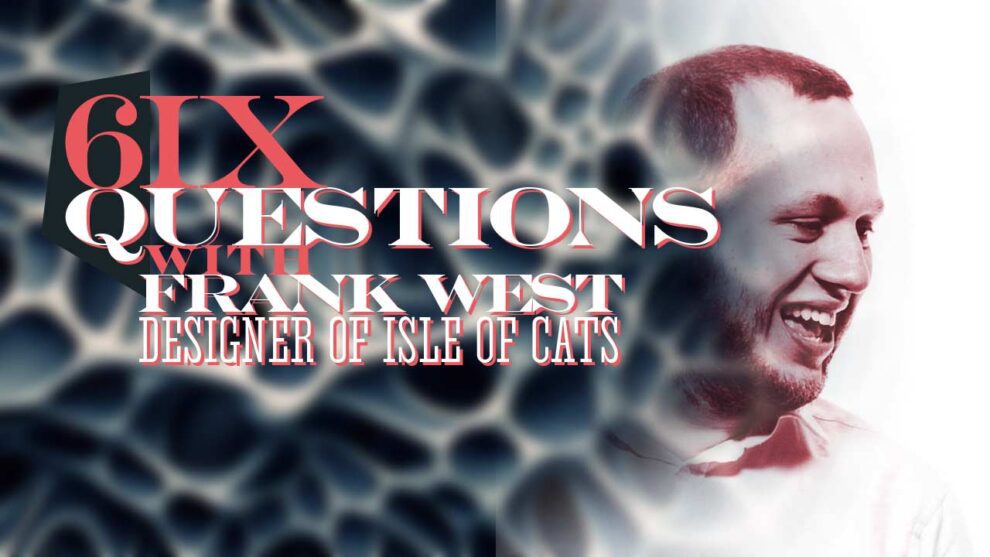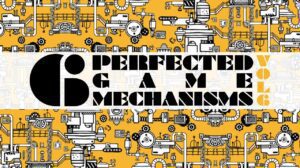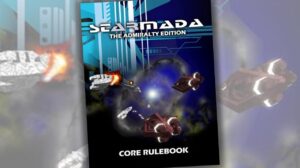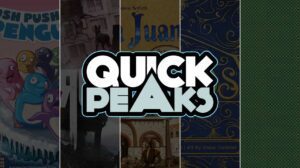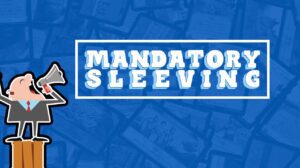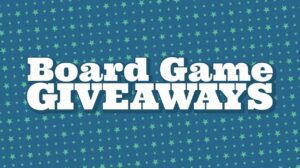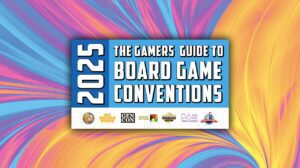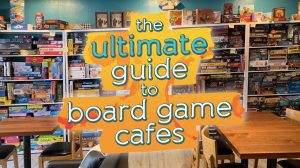Catnip
My introduction to the beautiful world created by Frank West was The Isle of Cats. As I expanded my collection of expansions for that wonderful game, I discovered such things as Vadoran Gardens. As I continued to look into this amazing game designer, I found things like Race to the Raft, Emberleaf, The Isle of Cats Duel and Explore and Draw versions. And now I find myself looking for a copy of The City of Kings.
It is safe to say that I am a fan of his work.
As I get deeper and deeper into the world he has created, falling in love with each new thing I am able to experience, I wanted to spend a moment with him and ask a few questions. He was gracious enough to indulge me in my pursuit. So without further ado, I present you with Six Questions with game designer Frank West.
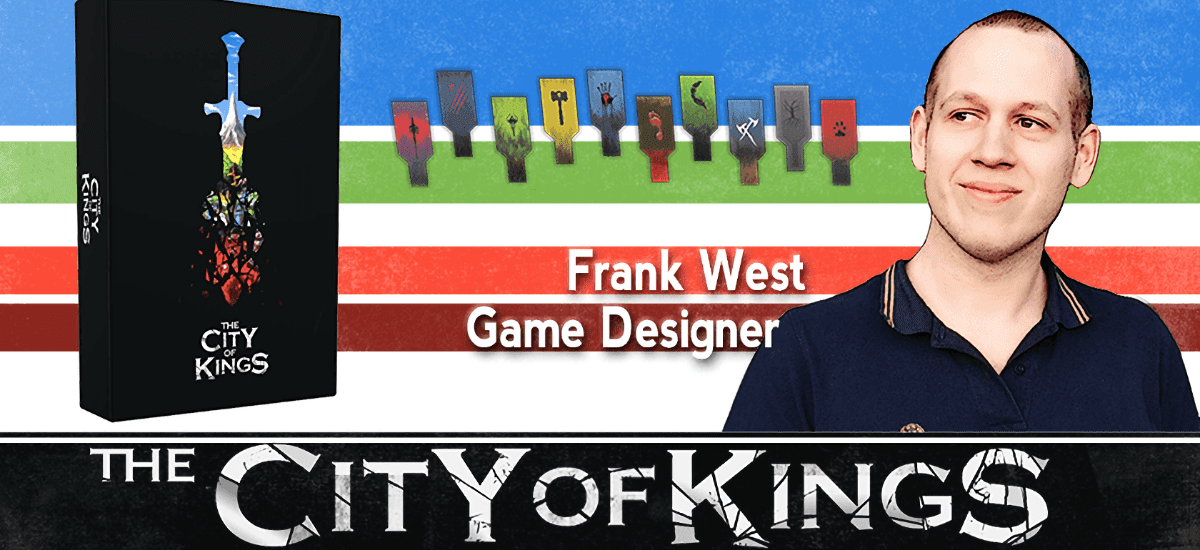
Cat Scratch Fever
Q1: You are one of a handful of designers from the United Kingdom that come to mind: how do you find your regional game design scene? When designing, do you look to the UK for inspiration, or do you find yourself looking elsewhere?
The UK scene’s really grown over the years. When I first started, I went to a London event and met a bunch of people who are still around today. It’s been great seeing how everyone’s taken different paths.
You’ve got companies like Alley Cat becoming traditional publishers, Hall or Nothing building consistent lines of games, and newer teams like Birdwood and Mazaza doing great things. I try to help out where I can.
Compared to the US, we’re working at a bit of a disadvantage with fewer large scale events and less exposure, so I think we naturally stick together more and support each other when we can.
Things can impact us differently to the US publishers, so we often solve problems in different ways. That doesn’t make it better or worse, just different, and I love that I get to be a part of it.
Q2: I would say that it is obvious from your game designs that you are a cat person. What sort of cats do you own (or have owned)? What are your favorite types of cats? What cats have been inspirations for those used in your games? Where did the ideas for the breeds used in your games come from?
I’ve had a lot of cats over the years, at one point I had five rescues at once. Most have been domestic shorthairs, all with their own personalities.
More recently, I’ve lived with two Russian Blues, Yanna and Kuma, and they’ve been a big part of my inspiration. Watching them stretch out across the floor is what first gave me the idea of cats and polyominoes going together.
The different cat breeds in The City of Kings universe came from a mix of research and art direction. I wanted each to look visually distinct, so Dragolisco and I spent a lot of time figuring out what worked for each type. For example, the Teruvian red cats have antlers because they’re inspired by deer, an animal that has some overlap with cats. But I’d never do something like a fin from a fish, as that would be pushing it too far. It still has to feel like a cat in this world.
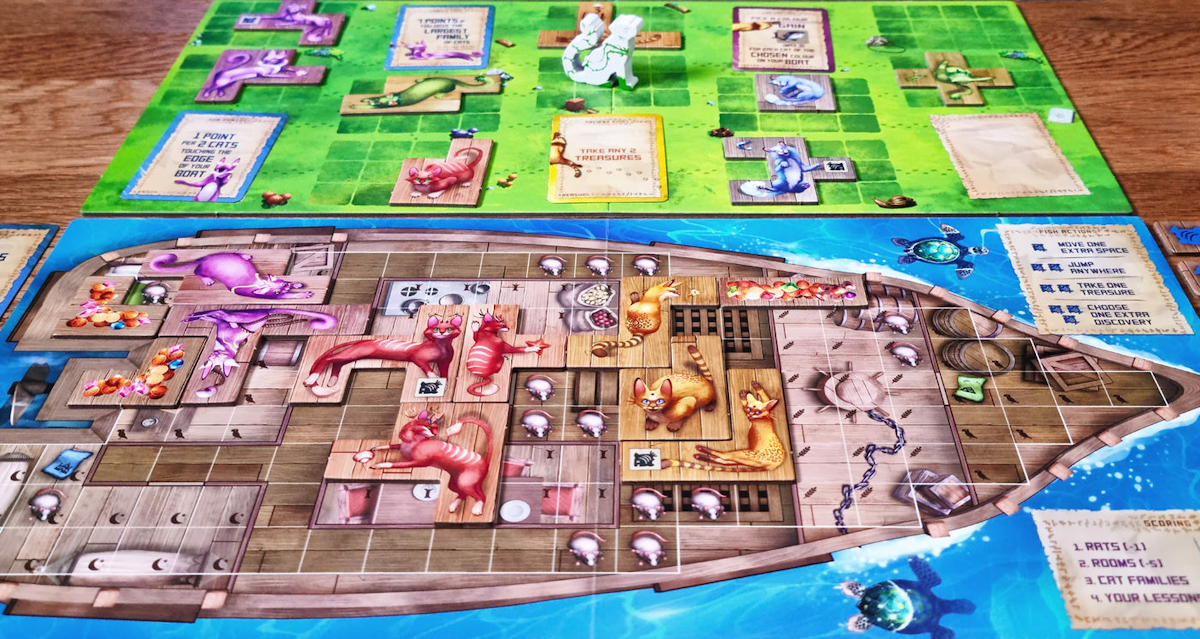
Q3: What is your favorite game mechanic? How would you describe your game design philosophy and process? Your games often come with family-friendly options: how do you balance the game play to allow for depth to remain when the complexity is reduced?
I don’t have a favourite mechanic, but I love puzzles, and that runs through all my games. Tile placement fits naturally, but I’ve really enjoyed working with card systems too.
In Emberleaf, I created card dancing — a system I love. It’s simple, clear, and still offers a lot of depth. I also enjoy card drafting, but it can be tough for new players if they’re unfamiliar with the cards, especially when hidden hands make it hard to ask questions.
So going forward, I want to explore ways to keep those interesting drafting choices but make them easier to teach and jump into. That’s what I like about card dancing, it gives you options, but you understand it instantly.
My design philosophy is about making games as easy as possible to get into while still offering depth. I often pair heavier systems with lighter themes to make them feel more approachable.
During testing, I spend a lot of time just watching players, where they pause, how they learn, where things slow down. It’s about shaping the experience first; balance comes later.
If people don’t play the game how I pictured, that’s not a problem, I change the game. I often end up going in new directions based on how people interact with it. That’s also why I include family modes or simpler rule sets — accessibility matters.
I love deep games, but I don’t think complexity and depth are the same thing. A good game should be easy to start and rewarding to master.
Q4: Your games invite the players into a world that seems vastly greater than any one game can describe. Vesh, for example, is a character that was introduced in The City of Kings, but is also the antagonist in The Isle of Cats series; the sorts of cats found in your games are exotic, interesting, and not of this world; a touch of the religious outlook in the world is suggested in Vadoran Gardens; the artwork (e.g., Race for the Raft) indicates that dragons and other mythical creatures coexist in this world. Do you plan to continue exploring this world? What sort of tools do you use to keep the world consistent? Do you have plans for other sorts of products (e.g. novel, atlas, role-playing game) that might allow further exploration of this world?
From the beginning, I wanted to build a world, not just games. The City of Kings universe has been growing for nearly a decade now, and all my games sit within it in some way.
You don’t need to play one to enjoy another, but there are crossovers. Vesh first appeared in The City of Kings and has shown up in different forms across other games. Vadoran Gardens explores the Vadorans (a playable race in The City of Kings), The Isle of Cats has connections through card names, Race to the Raft includes familiar creatures on the cards, and Emberleaf takes it further with statues and world elements built into the board.
Some games are closely connected to the lore, others less so. I want the flexibility to tell stories from different points in time and perspectives — good, bad, before, and after. It gives me the freedom to explore all sorts of ideas in ways that still feel familiar within the world.
I’ve written a huge amount of backstory, and maybe one day I’ll return to a more story-driven game, but for now I’m focused on the games themselves and just suggesting hints of what’s happened in this world.
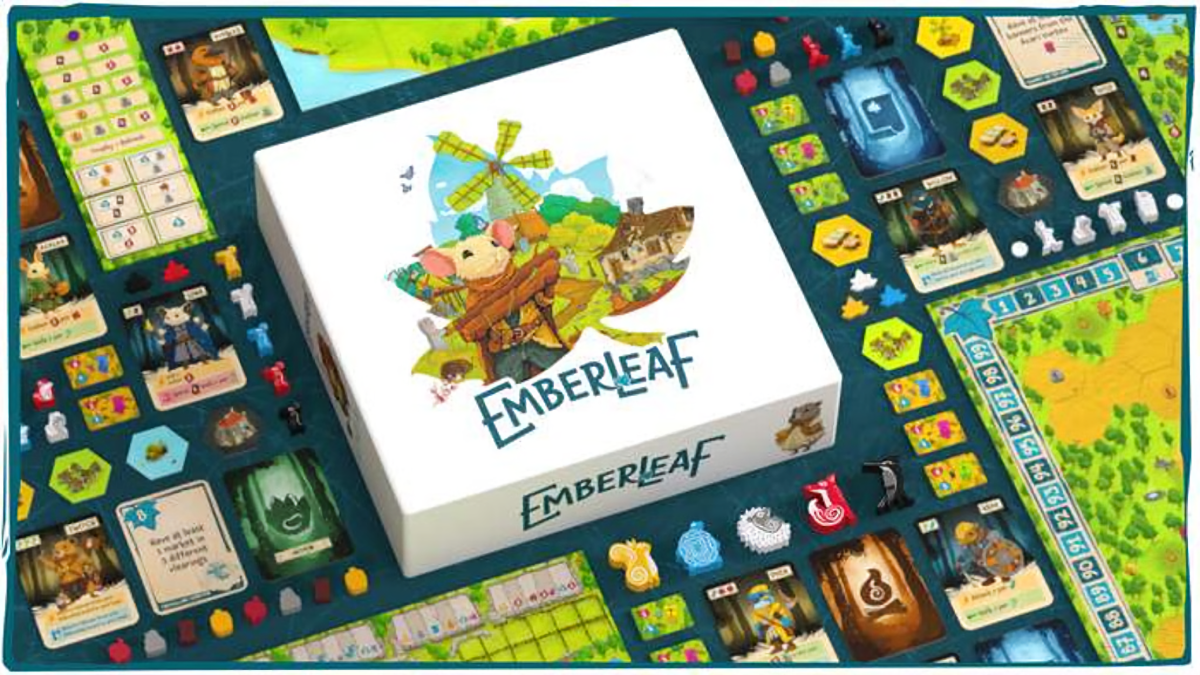
Q5: If you exclude the games you have designed, produced, or worked on, what games are your favorites and why? Have you encountered a game, played it, then immediately thought “why didn’t I create this?” What designers or publishers do you get excited about when a new game is announced?
I enjoy playing lots of different games, and I rarely play the same one over and over. I’d usually rather try something new — I like seeing different designs, systems, and approaches.
My favourite games depend on the group. I love Eclipse and Twilight Imperium, but only as full-day events, proper, sit down at 10am and finish at midnight kind of sessions. I want the big table, the food breaks, the conversations. I’m not interested in playing them fast or with few people.
For smaller games, I like Innovation, it’s clever and works well as a head-to-head.
Do I ever wish I’d made someone else’s game? Sometimes! I played Tornado Splash recently, and it was great, a small Japanese racing card game with a really smart system where you build the track as you go. It reminded me of Race to the Raft, where the board evolves and tells a story. I love that kind of thing.
I don’t follow specific designers or publishers — I get just as excited by a great first-time creator as I do by a veteran releasing their next hit.
Q6: Is there anything else you would like to tell us gamers about? Do you have anything in the pipeline you would like to tease? Any easter eggs in the games you have already published we might want to be on the lookout for? If nothing else, what is the typical day in the life of Frank West like? Tell us about your company!
I tend to keep my upcoming projects to myself until they’re nearly ready. I only publish games I fully believe in, and sometimes that means pulling a game back if it’s not quite there.
When something like Emberleaf launches, I want to stay focused on it, not jump straight into hyping the next thing. I think games deserve that space.
All my games include Easter eggs. The Isle of Cats has hints in the card names, Race to the Raft has little creatures from the world, and Emberleaf is full of visual references, from statues to animals spread around the board.
A typical day for me starts with coffee and letting the dog out. I clear my inbox first — I’m a zero-inbox person — and then jump into whatever stage of the process I’m at.
I handle everything myself, so my work changes all the time. Sometimes it’s weeks of design and testing, then it shifts to manufacturing, or marketing, or Kickstarter prep. Over a year or so, I rotate through ten different roles, and I love that. It keeps things fresh.

Catnap
I would like to thank Mr. West for his time, as well as all the hours I have enjoyed playing his games! I truly appreciate him taking time out of his schedule to answer my questions and to provide insight into his mind and thought process. I eagerly look forward to any and all products that come out of his company in the future. He will always have at least one sale. As I said: I am a fan. 🙂
I would also like to thank the team at Meeple Mountain. My original question set was missing what is now Question #1 – something that was a major oversight! I can only blame my being an American educated in the U.S. school system (very sorry). I love getting new perspectives on things, and failing to ask about the market on that side of the pond was potentially a massively missed opportunity on my part. Thanks to all of you. I have added a few game design houses to my bookmarks (thanks for the info, Mr. West!) and will be exploring the things they have to offer!


